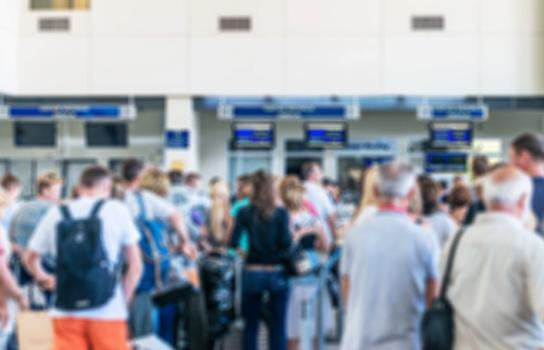TSA Pre✓®
How it Works
1. Apply Online
Submit an online application in 5 minutes & schedule an appointment at any of 380+ enrollment centers.
2. Background Check
A 10 minute, in person appointment that includes a background check and fingerprinting.
3. Enjoy TSA Pre✓®
Add your Known Traveler Number to your ticket and enjoy!
Security
The Transportation Security Administration (TSA) recommends arriving to the airport two hours in advance of your flight departure time for domestic travel and three hours for international flights. Allow ample time for parking, checking your luggage, obtaining a boarding pass and longer-than-average wait times during peak travel periods.
Liquids Rule
You are allowed to bring a quart-sized bag of liquids, aerosols, gels, creams and pastes in your carry-on bag and through the checkpoint. These are limited to travel-sized containers that are 3.4 ounces (100 milliliters) or less per item. Placing these items in the small bag and separating from your carry-on baggage facilitates the screening process. Pack items that are in containers larger than 3.4 ounces or 100 milliliters in checked baggage.
Any liquid, aerosol, gel, cream or paste that alarms during screening will require additional screening.
Medications
One of the more popular questions from travelers is: “Can I travel with my medication?” The answer is yes, with some qualifiers. Here are a few tips that you might find helpful.
- It is not necessary to present your medication to, or notify an officer about any medication you are traveling with unless it is in liquid form (See next bullet).
- Medication in liquid form is allowed in carry-on bags in excess of 3.4 ounces in reasonable quantities for the flight. It is not necessary to place medically required liquids in a zip-top bag. However, you must tell the officer that you have medically necessary liquids at the start of the screening checkpoint process. Medically required liquids will be subject to additional screening that could include being asked to open the container.
- You can bring your medication in pill or solid form in unlimited amounts as long as it is screened.
- You can travel with your medication in both carry-on and checked baggage. It’s highly recommended you place these items in your carry-on in the event that you need immediate access.
- TSA does not require passengers to have medications in prescription bottles, but states have individual laws regarding the labeling of prescription medication with which passengers need to comply.
- Medication is usually screened by X-ray; however, if a passenger does not want a medication X-rayed, he or she may ask for a visual inspection instead. This request must be made before any items are sent through the X-ray tunnel.
- Nitroglycerin tablets and spray (used to treat episodes of angina in people who have coronary artery disease) are permitted and have never been prohibited.
Source: https://www.tsa.gov/travel

